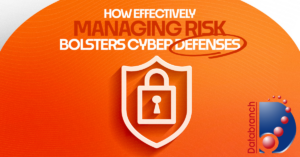
Are you prepared to face a cybersecurity breach, a natural disaster or a system failure? Such disruptive events can strike at any moment, causing chaos and confusion.
But don’t worry. With an effective incident response plan in place, you can handle any incident with confidence.
This blog is intended to help you enhance your plan simply and straightforwardly. So, let’s dive in and make sure you’re ready for whatever comes your way.
Best Practices for Effective Incident Response Planning
To be well-prepared for any incident, it’s important to follow the steps below:
1. Identify and Prioritize Critical Data and Assets
Knowing precisely what resources you have helps you allocate them efficiently during an incident, saving time and minimizing overall damage. Threat modeling is a process used in cybersecurity that is beneficial in this regard. It involves identifying potential threats and vulnerabilities to an organization’s assets and systems.
2. Establish a Dedicated Team
A cohesive and well-trained team with clearly defined roles can work together to ensure an efficient and effective response.
3. Conduct Regular Trainings
Regular training helps keep your team informed of the latest techniques and threats, ensuring they can handle any situation with confidence. Our Breach Prevention Platform and Security Awareness Training that comes with simulated phishing tests that will train your employees in spotting real world threats.
4. Implement Continuous Monitoring
Continuous monitoring systems can detect incidents early and take action before they escalate, potentially saving your organization from significant damage.
It is critical for any business to survive and thrive in today’s cybersecurity environment which is why Databranch provides a 24 x 7 proactive monitoring and alerting service for our managed clients. Visit us here to learn more and get started.
5. Establish Clear Communication Channels
Clear communication channels within your team and with external stakeholders ensure that everyone is on the same page during the response, minimizing confusion and errors.
6. Develop a System to Categorize Incidents
Categorizing incidents based on their severity and impact ensures that you can respond appropriately to each incident, minimizing long-term damage to your organization.
How we can Help
All businesses today must have a solid incident response plan against ever-evolving cybersecurity threats. That’s where Databranch can be your strategic partner and your first line of defense against cyberstorms.
If you’re uncertain about how to approach incident response planning, we can help you in the following ways:
- We’ll customize an incident response plan that aligns with your goals and challenges.
- We’ll identify vulnerabilities and rank incident response planning through risk assessments.
- We’ll help you build a fully equipped incident response team with clear roles.
- We’ll suggest and apply advanced security technologies to boost your detection and responsibilities.
- We’ll establish continuous monitoring to detect and respond to potential security incidents quickly.
- We’ll ensure that your incident response plan complies with legal and regulatory requirements.
- We’ll assist with post-incident analysis to refine response plans based on lessons learned.
Take Control of your Incident Response Plan
Don’t wait for a security breach to happen. Our team has years of experience and expertise to ensure the safety of your data. Take charge of your incident response plan now by contacting us at 716-373-4467 option 6, or [email protected] to schedule a no-obligation consultation with our team of experts.
You can also download our infographic to review the 4 stages of an incident response plan.
Read More

In today’s rapidly evolving digital landscape, where cyberthreats and vulnerabilities continually emerge, it’s obvious that eliminating all risk is impossible. Yet, there’s a powerful strategy that can help address your organization’s most critical security gaps, threats and vulnerabilities — comprehensive cyber risk management.
Implementing a well-thought-out cyber risk management strategy can significantly reduce overall risks and strengthen your cyber defenses. To understand the profound impact of this approach, continue reading as we delve into the nuances that make it a game changer in digital security.
Cyber Risk Management vs. Traditional Approaches
Cyber risk management diverges significantly from traditional approaches, differing in the following key aspects:
Comprehensive Approach
Cyber risk management isn’t just an additional layer of security. It’s a comprehensive approach that integrates risk identification, assessment and mitigation into your decision-making process. This ensures there are no gaps that could later jeopardize your operations.
Beyond Technical Controls
Unlike traditional approaches that often focus solely on technical controls and defenses, cyber risk management takes a broader perspective. It considers various organizational factors, including the cybersecurity culture, business processes and data management practices, ensuring a more encompassing and adaptive security strategy.
Risk-Based Decision-Making
In traditional cybersecurity, technical measures are frequently deployed without clear links to specific risks. Cyber risk management, however, adopts a risk-based approach. It involves Threat Modeling, which is a deep analysis of potential threats, their impact, and likelihood.
Threat modeling helps businesses prioritize their risk management and mitigation strategies. The goal is to mitigate the risk of falling victim to a costly cyber incident
Alignment with Business Objectives
A distinctive feature of cyber risk management is its alignment with your overarching business objectives. It ensures that your cybersecurity strategy takes into account your mission, goals and critical assets, thereby making it more relevant to your organization’s success.
Holistic View of Security
Cyber risk management recognizes the significance of people, processes and technology, embracing a holistic view of security. It acknowledges that a robust security strategy is not solely dependent on technology but also on the people implementing it and the processes that guide its deployment.
This is why Employee Security Awareness training can make such an impact on your businesses cybersecurity posture. You and your colleagues are your company’s greatest risk, but also your greatest asset. Visit us here to learn more about our advanced cybersecurity training program.
Resource Allocation
By prioritizing risks based on their potential impact and likelihood, cyber risk management allows you to allocate resources more effectively. This means that your organization can focus on the areas of cybersecurity that matter the most, optimizing resource utilization.
The Role of Risk Tolerance in Cyber Risk Management
Risk tolerance is a pivotal aspect of enterprise risk management (ERM). It serves as a guiding principle, shaping your organization’s risk-taking behavior, influencing decision-making and providing a framework for achieving objectives while maintaining an acceptable level of risk.
Key components of risk tolerance are:
Willingness to Take Risks
Risk tolerance in cyber risk management is about your organization’s readiness to embrace calculated risks by acknowledging that not all risks can be eliminated. It shapes your organization’s ability to innovate and seize opportunities while maintaining an acceptable level of security risk.
The Capacity to Absorb Losses
This component of risk tolerance assesses your organization’s financial resilience. It’s about having a financial buffer to absorb losses without jeopardizing your core operations, ensuring that you can recover from security incidents without severe disruption.
Consideration of Strategic Objectives and Long-Term Goals
Risk tolerance should be in harmony with your strategic objectives and long-term goals. It ensures that your risk-taking behavior is aligned with your organization’s broader mission, avoiding actions that could undermine your strategic direction.
Visit us here to learn more about how to conduct a Technology Infrastructure Review and how to incorporate the results into your IT objectives roadmap.
Compliance and Regulatory Considerations
Meeting compliance and regulatory requirements is an essential aspect of risk tolerance. It means understanding the legal and regulatory landscape and ensuring that your risk management strategy adheres to these standards, reducing the risk of legal consequences.
Meeting the Expectations of Customers and Stakeholders
A critical part of risk tolerance is understanding and meeting the expectations of your customers and stakeholders. It involves maintaining the trust and confidence of these groups by demonstrating that you prioritize their interests and data security in your risk management approach.
Collaborative Path to Success
Now that you understand how cyber risk management empowers organizations like yours to strengthen your defenses, it’s time to take action. Download our comprehensive checklist to navigate the four essential stages of cyber risk management. This resource will guide you in implementing a tailored strategy that meets your unique needs.
Don’t wait for the next cyberthreat to strike. Reach out to Databranch today at 716-373-4467 option 6, or [email protected] to start the process of making your organization more secure. Together, we’ll enhance your digital defenses, secure your organization’s future and prioritize your security.
Read More

As cyber threats continue to increase, businesses must take proactive steps. They need to protect their sensitive data and assets from cybercriminals. Threats to data security are persistent and they come from many different places.
Today’s offices are digitally sophisticated. Just about every activity relies on some type of technology and data sharing. Hackers can breach these systems from several entry points including computers, smartphones, cloud applications, and network infrastructure.
It’s estimated that cybercriminals can penetrate 93% of company networks.
One approach that can help organizations fight these intrusions is threat modeling. Threat modeling is a process used in cybersecurity that involves identifying potential threats and vulnerabilities to an organization’s assets and systems.
Threat modeling helps businesses prioritize their risk management and mitigation strategies. The goal is to mitigate the risk of falling victim to a costly cyber incident.
Here are the steps businesses can follow to conduct a threat model.
Identify Assets That Need Protection
The first step is to identify assets that are most critical to the business. This includes sensitive data, intellectual property, or financial information. What is it that cybercriminals will be going after?
Don’t forget to include phishing-related assets. Such as company email accounts. Business email compromise is a fast-growing attack that capitalizes on breached company email logins. Some hackers are even known to use reply-chain phishing attacks after gaining access to a businesses email.
Identify Potential Threats
The next step is to identify potential threats to these assets. Some common threats could be cyber-attacks such as phishing. Others would be ransomware, malware, or social engineering.
Another category of threats could be physical breaches or insider threats. This is where employees or vendors have access to sensitive information.
Remember, threats aren’t always malicious. Human error causes approximately 88% of data breaches. So, ensure you’re aware of mistake-related threats, such as:
- The use of weak passwords
- Unclear cloud use policies
- Lack of employee training
- Poor or non-existent BYOD policies
Are your employees trained to spot real world threats such as phishing and business email compromises? Visit us here to learn more about our Breach Prevention Platform and Security Awareness Training with simulated phishing tests.
Assess Likelihood and Impact
Once you’ve identified potential threats, take the next step. This is to assess the likelihood and impact of these threats. Businesses must understand how likely each threat is to occur. As well as the potential impact on their operations, reputation, and financial stability. This will help rank the risk management and mitigation strategies.
Base the threat likelihood on current cybersecurity statistics as well as a thorough vulnerability assessment. It’s best this assessment is by a trusted 3rd party IT service provider, such as Databranch. If you’re doing your assessment with only internal input, you’re bound to miss something.
Prioritize Risk Management Strategies
Next, prioritize risk management strategies based on the likelihood and impact of each potential threat. Most businesses can’t tackle everything at once due to time and cost constraints. So, it’s important to rank solutions based on the biggest impact on cybersecurity.
Some common strategies to consider include implementing:
- Access controls
- Firewalls
- Intrusion detection systems
- Employee training and awareness programs
- Endpoint device management
Businesses must also determine which strategies are most cost-effective. They should also align with their business goals.
Continuously Review and Update the Model
Threat modeling is not a one-time process. Cyber threats are constantly evolving. Businesses must continuously review and update their threat models. This will help ensure that their security measures are effective. As well as aligned with their business objectives.
Benefits of Threat Modeling for Businesses
Threat modeling is an essential process for businesses to reduce their cybersecurity risk. Identifying potential threats and vulnerabilities to their assets and systems is important. It helps them rank risk management strategies. As well as reduce the likelihood and impact of cyber incidents.
Here are just a few of the benefits of adding threat modeling to a cybersecurity strategy.
Improved Understanding of Threats and Vulnerabilities
Threat modeling can help businesses gain a better understanding of specific threats. It also uncovers vulnerabilities that could impact their assets and identifies gaps in their security measures and helps uncover risk management strategies.
Ongoing threat modeling can also help companies stay out in front of new threats. Artificial intelligence is birthing new types of cyber threats every day. Companies that are complacent can fall victim to new attacks.
Cost-effective Risk Management
Addressing risk management based on the likelihood and impact of threats reduces costs. It can optimize company security investments while ensuring that businesses divide resources effectively and efficiently.
Business Alignment
Threat modeling can help ensure that security measures align with the business objectives. This can reduce the potential impact of security measures on business operations. It also helps coordinate security, goals, and operations.
Reduced Risk of Cyber Incidents
By implementing targeted risk management strategies, businesses can reduce risk. This includes the likelihood and impact of cybersecurity incidents. This will help to protect their assets. It also reduces the negative consequences of a security breach.
Get Started with Comprehensive Threat Identification
Wondering how to get started with a threat assessment? Our experts can help you put in place a comprehensive threat modeling program. Give us a call today at 716-373-4467 x115 or [email protected] to schedule a discussion.
Article used with permission from The Technology Press.
Read More











